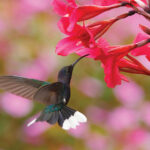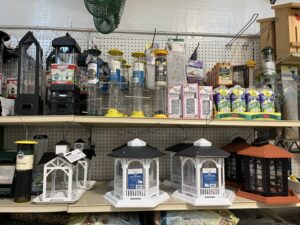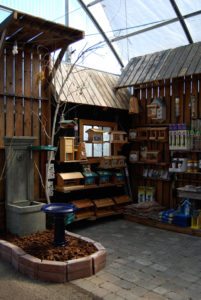Fears and Myths
As with anything new or unknown, there are a couple of myths about water gardening that always seem to come up when customers are deciding whether or not to buy or install a water garden in their backyard. I’d like to help you dispel those myths by explaining why they are just that myths.
Too Much Maintenance
When customers initially inquire about a water feature, the first question they usually ask is, “How much maintenance is this going to require? I’ve heard the horror stories. Is it really worse than a swimming pool or a hot tub?” In reality, the required maintenance for a well-constructed water garden is next to nothing nada in comparison to a pool or a hot tub.
When you tell prospective customers this, they can hardly believe it. They may think you’re stretching the truth, but if you explain exactly how the five elements of an ecosystem complement each other (see sidebar below) to create a clean and healthy pond, it begins to sink in. As you describe how their water will be crystal-clear after three or four days and how they’ll see and feed their fish without green hazy interference, they start to think, “Hey, maybe this guy’s telling the truth after all. It kind of makes sense.” The only real maintenance issues with a properly built pond are the weekly skimmer filter cleanings and one annual cleanout. It’s less work than mowing the lawn.
Too Expensive
The next big issue is, of course, the cost. “It may be easy to maintain, but is this thing going to cost me an arm and a leg?” Actually, the average cost of a beautiful, natural, living pond, including a waterfall, is about the same as a hot tub.
Naturally, there are a variety of factors that go into making up the total cost of a pond, including the size, layout and any extras such as a second waterfall, more lights in the pond bed or a longer stream. But the standard 11- x 16-foot pond falls into the same financial ballpark as the average hot tub.
What about fish and mosquitoes?
A couple of other issues that come up on a regular basis include what to do with fish in the winter and mosquitoes in the summer. The spread of West Nile Virus has created some negative publicity for outdoor ponds, but it doesn’t have to. You simply need to educate customers about the importance of water movement.
Moving water will keep ice from completely freezing over a pond and will discourage mosquitoes from laying eggs, as mosquitoes are attracted to stagnant or still water, not constantly moving water like in a stream or waterfall.
To ensure that enough movement is created in your customers’ ponds, suggest that they place a small pump on the first shelf of the pond so it bubbles at the water’s surface; that they install a decorative, water-spewing fountain; or that they create a stream that empties into the pond. In the winter, the bubbling action will maintain a hole in the ice, allowing oxygen to get into the system, and gases to escape. In the summer, the movement will be enough to deter mosquitoes. If mosquitoes do find a place in a water garden to lay their eggs, the fish will do a great job of keeping them cleaned up. Mosquitoes make a delicious meal.
The do-it-yourselfers
The do-it-yourselfers will need a little more than you just squelching their fears of an excess mosquito population. Customers who are interested in buying the pond kit from you and installing it themselves will need your expertise, both about how to install the pond as well as which products will work best for them. It’s critical that you supply them with quality materials; most importantly, the kit you supply should contain every part the customers will need to construct their pond the right way. The instructions have to be straightforward and easy to follow. If they’re overly technical, you’ll end up with a series of problems that could have been avoided.
A pond kit that is complete in every conceivable way, with user-friendly instructions and a simple recipe, will ensure that your customers can successfully build their own water garden. These happy customers will likely be back to buy fish and plants from you. Their happiness is important to you.
The Hub of the Home
If you took a tour of 100 do-it-yourself ponds in your area, you’d probably see 100 unique works of art that reflect the preferences and creativity of the people who designed and built them. You’d probably also see 100 happy customers who love their ponds and name their fish. They also probably drink their morning coffee and read their newspaper by their pond. It’s almost uncanny how the pond becomes the geographical hub of the home.
It’s where people entertain, relax and after a while, in a very real sense, it’s where they live.
So should ponds and water features be an important part of your retail business? Yes! Ponds have the potential to substantially contribute to your bottom line. And if you add in all the related landscaping that results from a pond installation, you’ll see why so many retailers are getting their businesses involved in this category.


















 Videos
Videos





